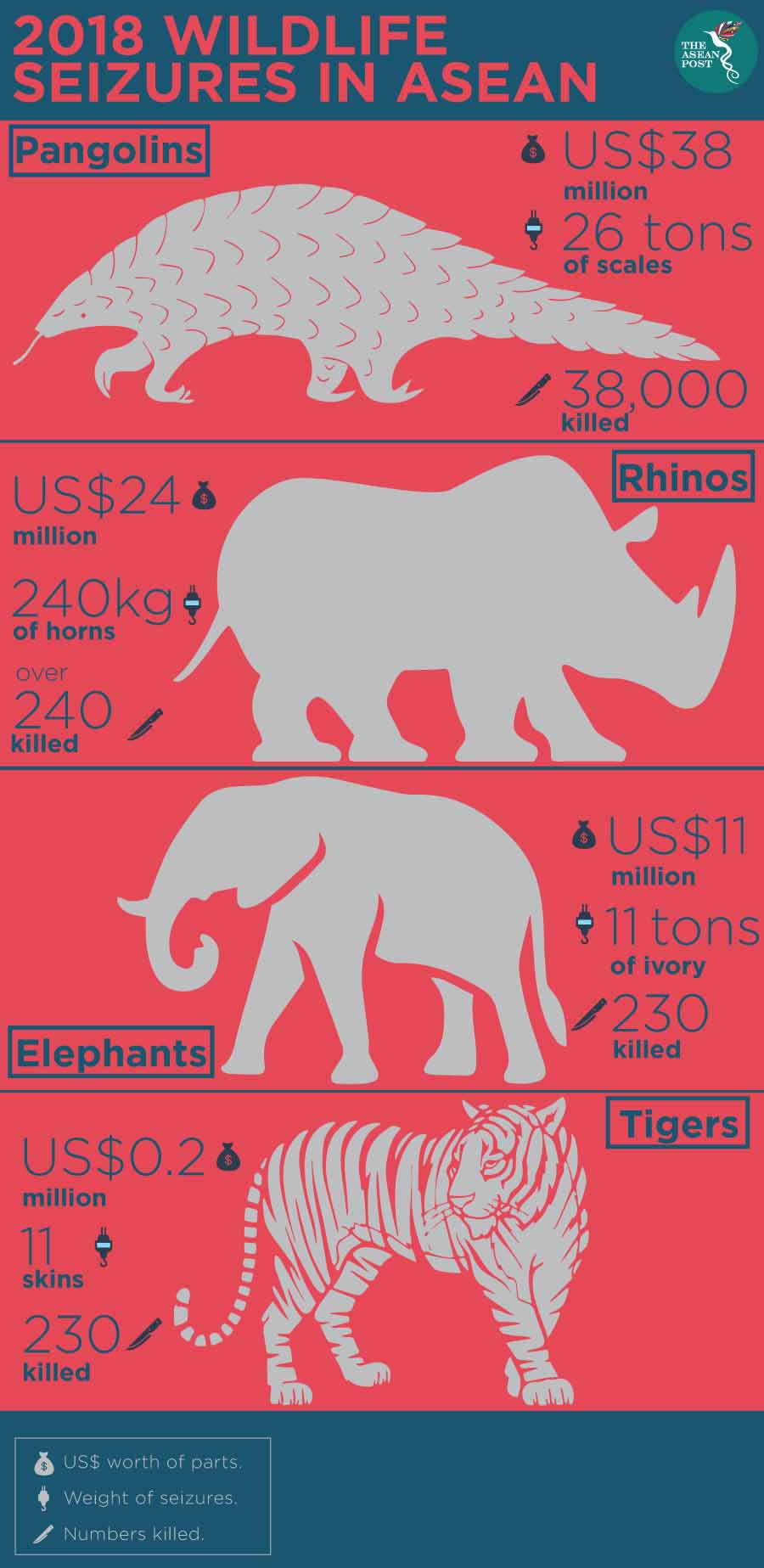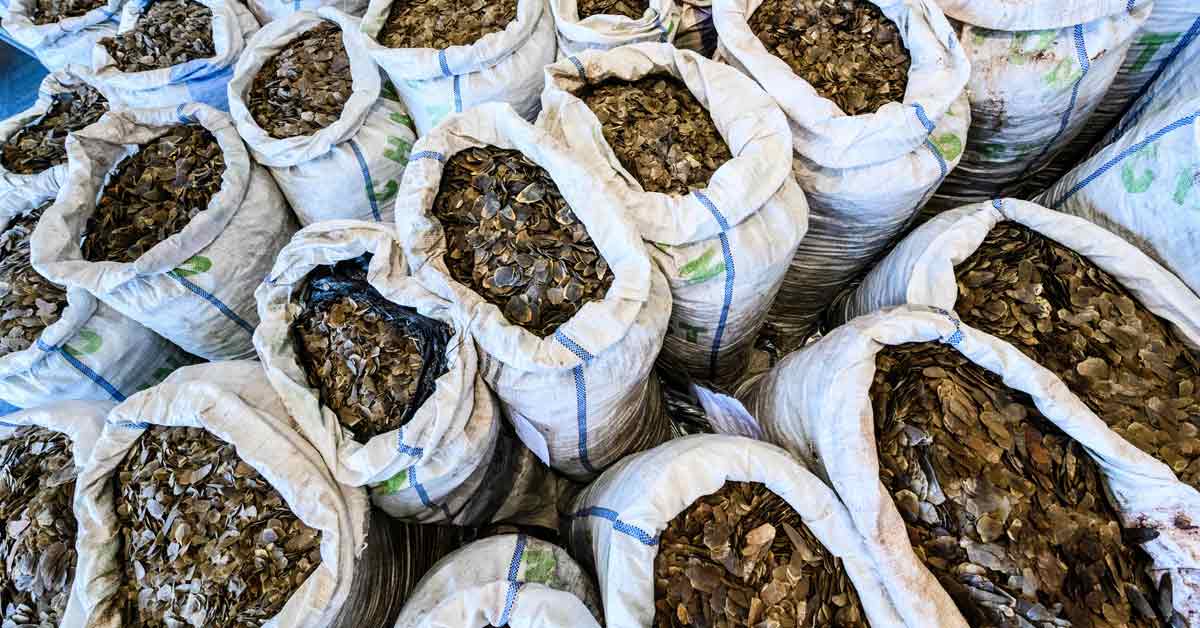2019 saw a record number of wildlife seizures in Southeast Asia and China, both regions are primarily wildlife trafficking transit points. Hong Kong reported a seizure of 8.3 tonnes of pangolin scales, Singapore reported a seizure of 11.9 tonnes of pangolin scales and 8.8 tonnes of elephant ivory, while Malaysia reported that 30 tonnes of pangolin scales was seized in Sabah.
While these seizures are significant, the United States Agency for International Development (USAID) reports that the number of arrests and prosecutions were limited considering that the trade involved is valued at US$23 billion annually.
China has been lauded for its significant efforts to seize and prosecute illegal traders, yet its major challenge to putting a stop to this lies within its own policies. Traditional Chinese medicine (TCM) - which has a long history of using animal ingredients - is a key pillar of China’s Belt and Road Initiative (BRI), and remains a profitable incentive to keep the trade alive.
Investigations have found that illegally trapped wildlife from across the region are exported and transited, often through fraudulent certification schemes, legal loopholes and corruption among state officials.
At the same time, China has produced a comprehensive guideline to promote the preservation and innovation of TCM and plans to set up hospitals, museums, and other infrastructure in the countries involved in the BRI to develop new markets as well as meet demands of existing markets in Europe, Africa and Asia.
This expansion could prove difficult for ASEAN countries to coordinate on the issue while at the same time combatting the large corruption within its own law enforcement. In March 2019, ASEAN made a joint statement that it will be strengthening collaborative efforts to curb the widespread problem.
Stronger policies may not be the answer.

“Most of the time, transnational wildlife crimes are closely connected to trafficking in illicit drugs and arms, but the responsible agencies in Thailand and other ASEAN countries still don’t have enough capacity or resources to deal with such a powerful crime network," Surapon Duangkhae from the Seub Nakhasathien Foundation told local Thai media.
A study by the Organisation for Economic Co-operation and Development (OECD) published in September 2019 highlights the key role of Southeast Asian nations in the extensive poaching of wildlife. In addition to being destination markets, the region plays an active part in the illegal sourcing and transiting of wildlife parts which are then traded commercially.
They also reported that regional efforts are weak due to perceptions of corruption and mistrust among counterparts which adds to difficulties in information exchanges across border. While the aspects related to information sharing and extradition treaties is becoming stronger, the ties between ASEAN countries that are sourcing and transiting the animal parts and their respective authorities remain underdeveloped.
In an investigation to uncover the illegal trade in pangolins, Malaysian media published an interview with an arrested policeman for possession of live pangolins. He provided them with inside details on how illegal wildlife parts are transited through Malaysia and the wide cooperative network between enforcement officers and crime syndicates: bribery.
The smugglers cut deals with the supervising officers, as officers under them have no power to make arrests. "Even if we want to work by the rules we cannot," said the officer, now standing trial. "You can even bring elephants across if you want, as long as you pay. If you don't pay, even a bag of rice is illegal."
This investigation may also be relevant to other ASEAN countries, as it sheds light on the established structure within the illegal wildlife trade. Increasing budgetary expenses on border patrols and strengthening policies is barely half of the problem. Case studies conclude that the implementation of anti-corruption tools is one of the most important factors in ensuring the long-term effectiveness in the crackdown of the illegal trade in wildlife.
Can ASEAN member states put an end to this despicable trade and protect endangered wildlife from going extinct? Does ASEAN have the regional capacity to tackle the extensive on-the-ground network of corruption that goes all the way to the top? 2020 might be the year that we finally get answers to these burning questions.
Related articles:
